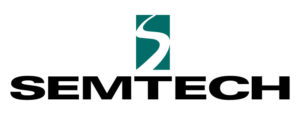Taking on the Building Blocks of IoT Sensors: Size, Range, Power Consumption

(phipatbig/Shutterstock)
As IoT implementations explode in scale, decreasing sensors’ size, lowering their power consumption and extending connectivity range become increasingly critical considerations. Semtech, the $600 million mixed-signal semiconductor maker, is taking on these IoT building block issues, announcing new LoRa devices and wireless radio frequency (RF) technology for lower power wide area network (LPWAN) IoT use cases.
Designed for sensor manufacturers, LoRa radios extend Semtech’s “link budget” by 20 percent with a 50 percent reduction in receiver current (4.5 mA) and a high power +22 dBm option. The result: battery life of LoRa-based sensors is extended up to 30 percent, the company said. “The extended connectivity range, with the ability to reach deep indoor and outdoor sensor locations, will create new markets as different types of verticals integrate LoRa Technology in their IoT applications including healthcare and pharmaceuticals, media and advertising, logistics/shipping, and asset tracking.”
Semtech said the footprint of LoRa sensors is 45 percent smaller than the current generation. The chipsets also support FSK modulation to allow compatibility with legacy protocols that are migrating to the LoRaWAN open protocol. The new platform also has a command interface designed to simplify radio configuration and shorten development cycles by requiring only 10 lines of code to transmit or receive a packet.
“Companies are always looking to make money in the IoT business,” Vivek Mohan, Semtech’s director of marketing, wireless IoT products, told EnterpriseTech. “It’s been in its hype cycle for a while now, there have been a lot of trials, a lot of early proof of concept deployments at a small scale. But now some of those are becoming much larger, there will be mass deployments with hundreds of thousands of sensors talking to IoT networks, so there’s big pressure on cost reduction while maintaining performance benefits.”
 Semtech said three new devices, SX1262 (+22dBm), SX1261 (+15dBm) and SX1268 (+22dBm, China frequency bands) are under trial use at customer sites and will be available in full production late in the first quarter of this year. Development kits for various regions and associated software will also be available at that time.
Semtech said three new devices, SX1262 (+22dBm), SX1261 (+15dBm) and SX1268 (+22dBm, China frequency bands) are under trial use at customer sites and will be available in full production late in the first quarter of this year. Development kits for various regions and associated software will also be available at that time.
According to Mohan, the new chipsets have been under development for four years and were influenced, in part, by Semtech’s involvement in the LoRa Alliance, which is focused on IoT LPWAN applications and whose membership has grown to more than 500 companies worldwide.
“All together, for a typical application, (the new chipsets) could provide up to 30 percent longer battery life,” Mohan said, “which is a big deal for two reasons: it lets you add more functionality keeping the same battery you have, or it lets you go to a lower capacity battery, which is a lot cheaper.”
“LPWAN IoT applications are going through a massive transformation, shifting from trials to large deployments in smart cities, buildings, healthcare, logistics, and agriculture,” said Marc Pegulu, VP and GM for Semtech’s Wireless and Sensing Products Group. “LoRa Technology enables an infinite amount of IoT use cases as Semtech pushes for the last mile of connectivity and reinforces its position as the de facto platform for LPWAN.”










